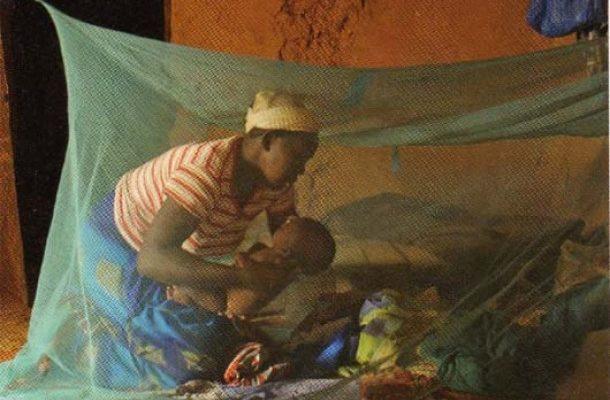“Furthermore, we know from our program monitoring and evaluation that net distribution only gets you part of the way to prevention. What matters most is proper net usage, by the right people, every night.”
Nets For Life: Fighting Malaria
One of the most important initiatives in which the Episcopal Church has participated over the last five years is NetsforLife, a program partnership for malaria prevention in 17 countries across sub-Saharan Africa.
As the world prepares to commemorate World Malaria Day on April 25, we call on the Church to pray for those suffering from this deadly disease and take stock of those things done and those things left undone.
For the next three years, NetsforLife is the centerpiece of The Episcopal Church’s prophetic response to the Millennium Development Goals.
Indeed, dioceses, congregations and individuals throughout the Church have taken up the call of the NetsforLife® Inspiration Fund and are working to distribute long-lasting insecticide-treated mosquito nets throughout Africa.
There are some stunning program accomplishments about which we can all be very proud:
- More than 6.3 million nets have been distributed
- Over 48,000 malaria agents have been trained
- Almost 35 million beneficiaries have been reached, either directly or indirectly
While we give thanks for these accomplishments, this is not time to rest on our laurels. According to the latest statistics from the World Health Organization (WHO):
- It is estimated that 42% of households in Africa owned at least one ITN (Insecticide Treated Net) in mid-2010, and that 35%of children slept under an ITN.
- The percentage of children using ITNs is still well below the WHO target of 80% partly because up to the end of 2009, ITN ownership remained low in some of the largest African countries.
- Low rates of use reported in some surveys are primarily due to a lack of sufficient nets to cover all household members; household survey results suggest that most (80%) of the available ITNs are used.
There is currently a huge effort to ensure that malaria nets reach those who need them the most, and recent measures indicate that progress is being made. According to the WHO report, a total of 254 million ITNs were delivered to countries in sub-Saharan Africa between 2008 and 2010 – enough to cover 66% of the 765 million people at risk. Eleven countries showed a reduction of more than 50% in either confirmed malaria cases or admissions and deaths in recent years, and overall malaria deaths have been reduced from 1 million annually to 781,000.
However, as the report points out:
- While the rapid scale-up of ITN distribution in Africa represents an enormous public health achievement, it also represents a formidable challenge for the future in ensuring that the high levels of coverage are maintained.
- The lifespan of a long-lasting ITN is currently estimated to be three years.
- Nets delivered in 2006 and 2007 are therefore already due for replacement, and those delivered between 2008 and 2010 soon will be.
In fact, this is exactly what we are seeing amongst our NetsforLife partners in Africa, and it is the challenge we face until malaria is eradicated – something that isn’t going to happen anytime soon.
Furthermore, we know from our program monitoring and evaluation that net distribution only gets you part of the way to prevention. What matters most is proper net usage, by the right people, every night.
So we have a three-fold challenge in malaria prevention:
- Ensuring universal Insecticide Treated Net coverage
- Sustained proper usage of those nets
- Net replacement after three years of use
The Episcopal Church, through its award-winning NetsforLife® program partnership, is rising to this challenge every day. Through the NetsforLife® Inspiration Fund, we are engaging Episcopal congregations, clergy, students and seminarians in raising awareness and funds for malaria prevention and education.
In closing, we want to share a story from a parish priest in one of our NetsforLife® partner dioceses:
“Before NetsforLife® came to this area, community members used to wake me up in the middle of the night at least four times every month to baptize and anoint a sick child-only to bury him or her the next day. Since the program started, such midnight calls have ceased. NetsforLife® is saving lives.”
Join us in the fight against malaria.
Episcopal Relief & Development is the international relief and development agency of the Episcopal Church and an independent 501(c)(3) organization. Together with the worldwide Church and ecumenical partners, Episcopal Relief & Development rebuilds after disasters and empowers people by offering lasting solutions that fight poverty, hunger and disease, including HIV/AIDS and malaria.

